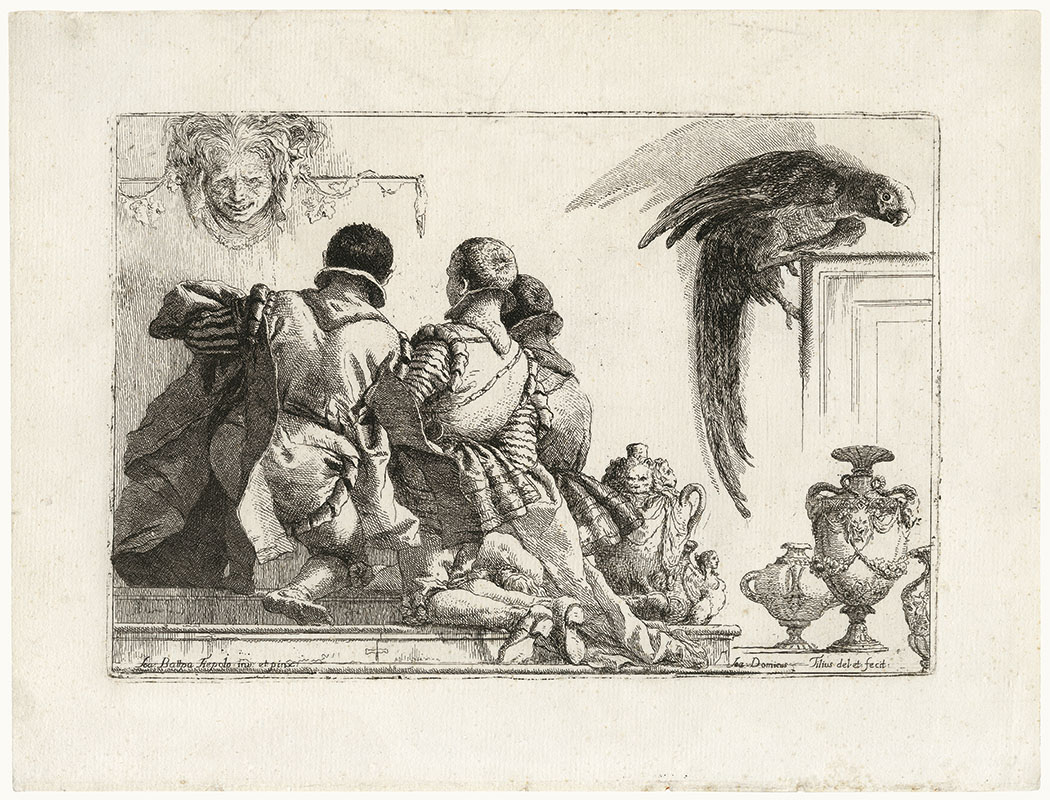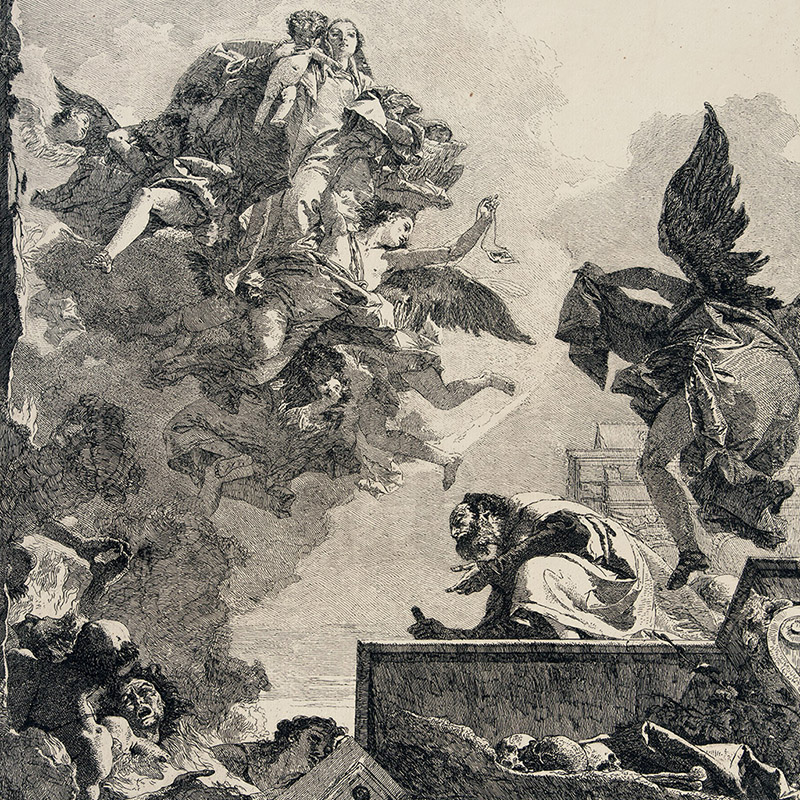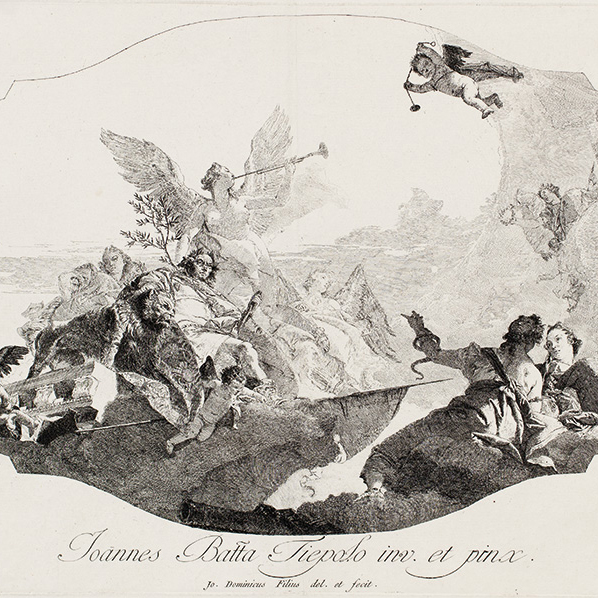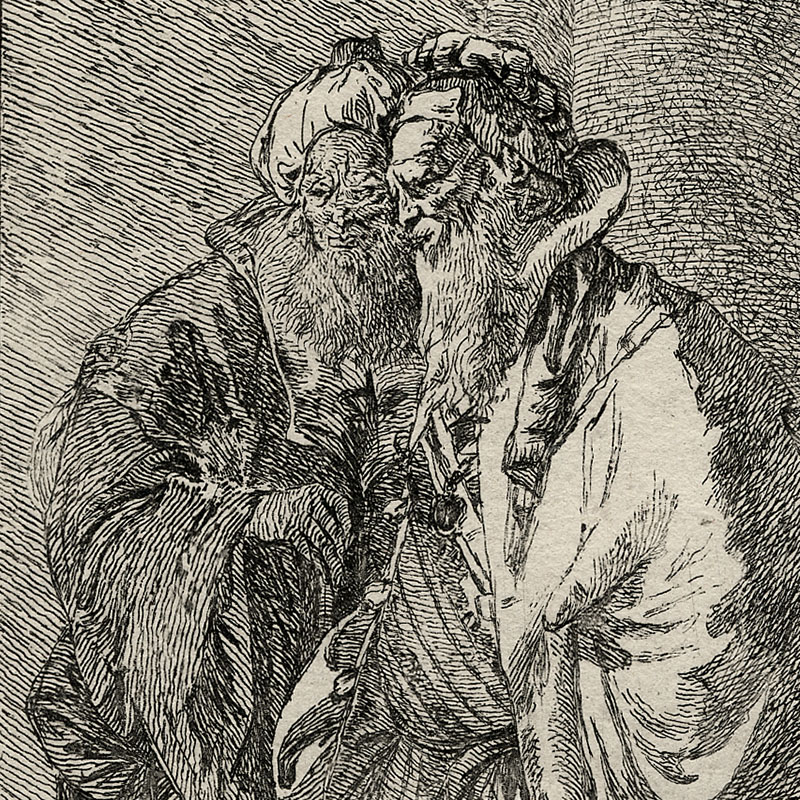Giovanni Domenico Tiepolo
Venice 1727 - 1804
mm 202 x 296; sheet dimensions mm 225 x 314
Succi, 1988, pag. 256, n. 176 II/II
In the engraving on the bottom left Joa: Battpa Tiepolo inv: et: pinx: a destra Joa: Dominicus Filius del et: fecit:
Brilliant proof well inked, in the second state of two.
In excellent condition with good margins beyond the copper mark.
Succi dates the sheet to 1775, in the final period of Giandomenico’s engraving activity. In fact, it is not included in the first edition of Giandomenico’s Catalogue, 1774 and is added in the second and third edition; in the index of the fourth edition the press appears combined with: Paggi, Donna e mascherone (Succi 177) with the clarification Pagi con, Mascarone, è rara.-Rami 2.
The two etching are quite rare.
The iconographic sources are deduced from different authors but combined with imaginative imagination: the Pages derive from the fresco The Marriage of Barbarossa in Würzburg, the Parrot is present in a fresco of Villa Zianigo, now preserved in Ca’ Rezzonico, attributed to Giambattista, the mask at the top left recurs frequently in numerous of his father’s works.
Information on the master
Domenico was born in Venice, studied under his father, and by the age of 13 was the elder Tiepolo's chief assistant. By the age of 20, he was producing his own work for commissioners. He assisted his father in Würzburg, decorating the famous stairwell fresco, in Vicenza at the Villa Valmarana in 1757, and in Madrid at the palace of Charles III.
His painting style developed after the death of his father in 1770, at which time he returned to Venice, and worked there as well as in Genoa and Padua. His painting, though keeping the decorative influence of his father, moved from its spatial fancy and began to take a more realistic direction. His portraits and scenes of life in Venice are characterized by movement, colour, and considered composition.
Many of Domenico's works are drawings, and as his father, he was a fine draftsman and a competent etcher. He produced 104 sketches of Punchinello, the standard character of the commedia dell'arte, a physically deformed clown. These were created as Entertainments for the Children, and attempted to poke fun at the pretensions and behaviour of the viewer.
Other works of the master



